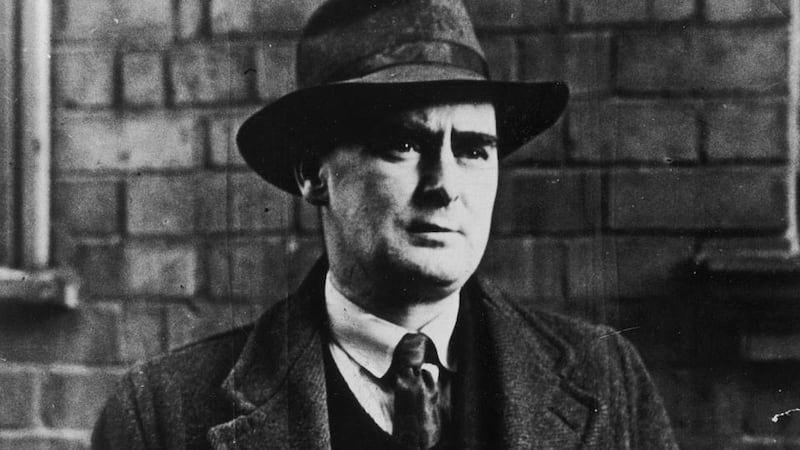In one of the quieter moments of the Ireland-England game on Saturday, I found myself marvelling at the extraordinary revival in popularity of the old Irish forename, Tadhg. The trend seems to be especially dramatic in rugby circles. Tadhgs accounted for an astonishing 13.3 per cent of the players who started against England at the weekend, and as many as half the candidates for Man of the Match.
Leaving rugby aside for a moment, such averages would not have been unusual in former times.
The name was so common in Ireland once, especially in the southern half of the country, that it could be applied even to the man in the street, or Tadhg na Sráide as he was sometimes known. In 17th-century Tipperary, it was rivalled only by John. And like Paddy and Mick, eventually, it became a byword for Irishmen in general, with the usual denigration that implied in certain quarters.
This may have marked the beginning of its long decline, which set in around the time the English playwright Thomas Shadwell wrote a comedy called The Amorous Bigot, featuring as his villain an Irish priest, Father Teague O'Devilly.
Mind you, that was in 1690, so other events of the same year may also have played a part in the name’s downturn.
In loyalist parts of Belfast today, “Taig” remains an ethnic slur; as, in the Rangers-supporting half of Glasgow, does the related “Tim”. But the historic denigration of Tadhgs was not confined to enemies of Irish nationalism.
In the original Irish, Tadhg meant 'poet' or 'story-teller' and indeed many of the old Gaelic bards were so named
Another priest, the famous lexicographer Patrick Dinneen, once noted that a Tadhg, Teig, or Teague, was "the typical Irishman, esp. the plebeian type", while by contrast, "Diarmaid (Dermot) seems applicable to the upper class."
This later provoked one of Myles na gCopaleen’s many skirmishes with Dinneen, who he accused of “again giving reckless rein to his romantic talent”.
Few Dermots of Myles’s acquaintance were upper class, the latter hinted, although some might be suffering from swelled heads, a condition Myles diagnosed as “Dermotitis”. That was 1957, when Tadhgs were rare and Dermots common. The tables have been reversed since. Suffice to say there were no Dermots playing last weekend.
In the original Irish, Tadhg meant “poet” or “story-teller” and indeed many of the old Gaelic bards were so named. One of the best known was Tadhg Dall Ó Úiginn (1550 – 1591), a blind poet of Connacht who studied at the great bardic school of Cill Clunaigh and enjoyed widespread fame for a time before meeting a grisly end.
Ó hÚiginn’s work included a poem that might have been useful in the Irish dressing room on Saturday– it was an appeal to the rival clans to unite against the common enemy, England. But like many bards, he also satirised his local enemies, some of whom took it badly.

His murder by the O’Hara Rua faction was preceded by a 16th-century form of censorship: they cut his tongue out. He is buried in the churchyard of Strade Abbey in Mayo under an unusual gravestone featuring the figure of a matchstick man.
Later, in Antwerp, Ó Cianáin describes people skating on the frozen river and a few perishing with screams when they fell through the ice
Another noted storyteller of that era was Tadhg Ó Cianáin. In a way, he was a forerunner of this column, because he is the first known Irish person to have kept a diary, which is doubly notable because at the time in question, 1607, he was among those fleeing Ireland with Hugh O’Neill and the other Gaelic chiefs.
His chronicle of their trip to Rome has been described as “a plain man’s view of what actually happened each day, what they ate and did, how they felt [and] what the various towns they passed through were like”.
It describes, for example, a storm at sea, in which the passengers tried to calm conditions by trailing a “cross of gold which contained a portion of the cross of the crucifixion” in the water.
Later, in Antwerp, Ó Cianáin describes people skating on the frozen river and a few perishing with screams when they fell through the ice. And somewhere, in passing, he refers to a “teinis-cúirt”, one of the earlier mentions in literature of that sport.
This brings us back, neatly enough, to the rugby, and to the Ireland’s opening try against England. They may have been only indirectly involved in that move, as decoys. But it’s apt that a Tadhg or two were also in attendance at the latest Flight of the Earls – helping create the gap through which Keith of that surname scampered so dramatically, like a hare through a hole in a hedge.










